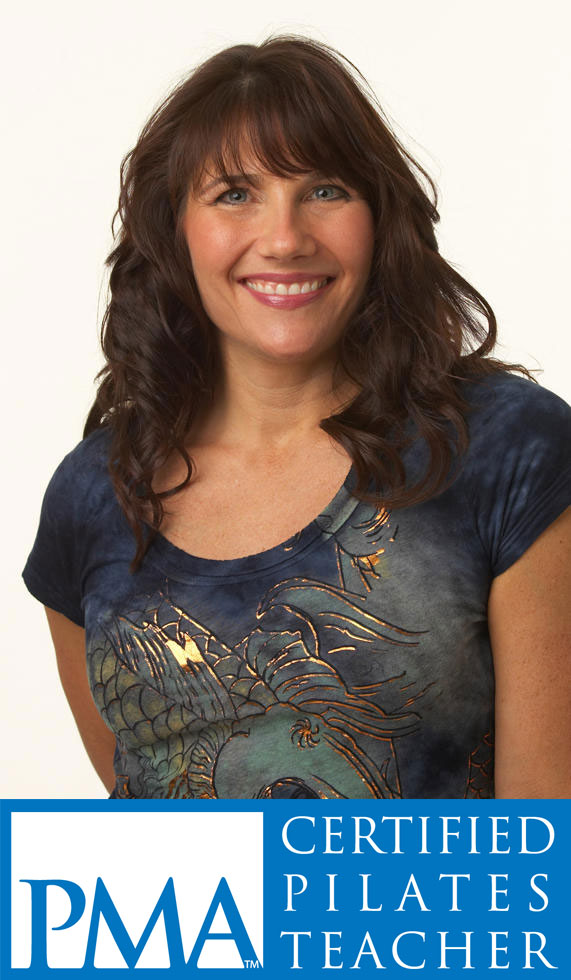Safe Spinal Flexion in the Pilates Roll-up 

February 22, 2017 - Amanda Jessee Iiams
I never teach a full forward fold during a roll-up in mat classes. I understand this is a controversial topic, but I’d like to tell you why and offer an alternative to the classic roll-up with this potentially harmful position. Did you know that 60% of the population has a bulging lumbar disc with no back pain symptoms? A study that was published in the New England Journal of Medicine sited these findings and it sent shock waves through the medical community. Think about all the people that you know with back pain symptoms or diagnosed bulging or herniated lumbar disc and the number increases. Now add in all of your clients, friends or family with tight hamstrings too. I don’t know about you but the number is pretty high in my world. Why do I mention hamstrings? Tight hamstrings tend to decrease the natural lordosis of the lumbar spine which can contribute to pain in the low back and increased risk of disc injury.
The forward fold both in yoga and in the Pilates roll-up is a lumbar disc rupture waiting to happen. The idea behind the movement is that bending forward from the lumbar spine with the legs straight will stretch the hamstrings and or the low back and make them more flexible. This just isn’t anatomically possible. If the hamstrings are tight there is a high likelihood that the lumbar region is unstable and will provide the slack needed to bend forward. Increased instability in the low back will result in the structures tightening not becoming more flexible. In addition, deep lumbar spine flexion puts a great deal of stress and tension (up to 200% of body weight) on the tendons, ligaments and muscles in the area and ultimately the lumbar discs. Oh, and it doesn’t stretch the hammies either.
In a mat class we may not get the luxury of assessing every single client to determine if this move is safe for them. Why put them at risk? In the accompanying video, I offer three version of the roll-up; the first is with a full forward fold, the second is with a forward fold into seated long sit posture and the third is with no forward fold. The third is the only roll-up I EVER teach. I like that the client can articulate through the joints of the spine using abdominal and hip flexors as the primary movers, stopping at a seated long sit position to practice good posture, and then articulating back to a supine position. Stopping at seated 90- degree at the hip joint will minimize the hamstring / low back problem I mention earlier. If your client has diagnosed low back issues, they should not be doing ANY lumbar flexion, so I would offer them a completely different exercise when you teach the roll-up.
Archive
- How Much Does it Cost to Become a Pilates Instructor?
- Unveiling the Top 3 Online Pilates Teacher Certifications of 2024: A Comprehensive Comparison
- Why Pilates Instructor Training Costs So Much (And Is It Worth It?)
- How to Become a Pilates Instructor (all your questions answered!)
- How Much can a Pilates Teacher Earn in 2023?
- Not all Online Pilates Teacher Certifications are Created Equal
- 5 Reasons to Get Your Pilates Mat Certification Now!
- Top 5 Questions to Ask Before Choosing an Online Pilates Instructor Certification
- How Much does an Online Pilates Certification Cost in 2023?
- Why Online Pilates Certifications are the Future of Pilates Teacher Certifications
- What Makes a Pilates Lifestyle?
- Pilates vs. Weight Training: Core Strength, Muscle Building, and More
- 5 Reasons Why Moms and Expecting Moms Should Become Pilates Instructors
- 5 Myths and Facts About Pilates Weight Loss
- Can Anyone Become a Pilates Instructor?
- The Top 3 Best Pilates Certification Online Programs
- 3 Easy Ways to Determine Your Career Path as a Pilates Instructor
- 5 Ways to Build a Successful Relationship with Your Clients as a Pilates Instructor
- 5 Reasons to Get Your Pilates Mat Teacher Certification Online
- Pilates Instructor Training Online Vs. In-Person
- Future of Pilates Training
- How Can I Get a Pilates Reformer Teaching Certification?
- Tips for Starting a Successful Career in Pilates
- Benefits of Online Pilates Instructor Training
- How to Become a Pilates Instructor
- Thinking About Getting Your Pilates Certification Online?
- How to Prepare for the PMA Exam
- How to Start a Pilates Studio Business
- 7 Reasons to Become a Pilates Instructor
- Anatomy Matters; Prone Hip Extension
- Anatomy Matters; Stretching the Glute Max
- Anatomy Matters; Hip Flexion vs. Spine Flexion
- Hip Turnout and the Deep Six in Pilates
- Proper Form for Pilates Bridge
- Toe and Foot Exercises for Preventing Bunions
- Teaching Proper Hip Hinge Mechanics
- Safe Spinal Flexion in the Pilates Roll-up
- Turns out I have a blog!!
Terms and Conditions





